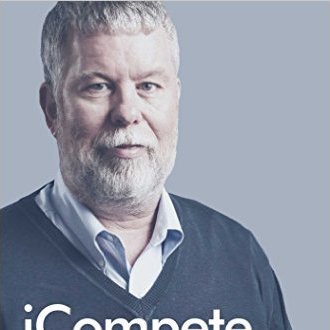
By: Wally Hauck
“Wisdom is found only in truth.” – Johan Wolfgang von Goethe
It is difficult to find the truth especially in complex situations. It can be elusive. It is often influenced by changes in our environment. It can shift dramatically when we change how we think about the problems we are seeking to solve. For example, some advertisements for cigarettes in the 1950 made claims that smoking was safe. Some claimed even doctors enjoyed them without concern, they could keep you slim, and/or they could help relieve your asthma symptoms. Today, those messages would be considered lies.
Are performance reviews effective or not? According to some research (SHRM) 58% of managers say no and of course 42% say yes. Jack Welch still defends the forced ranking of employees using the performance review (rank-and-yank). Steve Ballmer at Microsoft “yanked” that policy out of Microsoft because a large percentage of employees claimed it was one of the worse policies on the planet for engagement and innovation. Who’s right? It depends! How you think about people, problems, and the root cause of poor performance will influence your answer.
There is a transformation occurring in the performance review process now. Many large organizations are the early adopters of that transformation. These include Adobe, GE, Deloitte, Google, and a few others. Still nearly 85% of organizations continue to use the typical performance review model. Yet many of those are now motivated more than ever to consider a change. According to a recent survey by Bersin, 70% of the organizations surveyed reported either recently changing their performance management system or were seriously considering it.
What’s the motivation to change? It’s the usual reasons and some additional new ones too. For some it’s the need for speed. The truth: annual reviews just don’t allow people to respond to the accelerated change in the marketplace. Customers’ needs and desires change frequently and employees must be in a position to respond. The annual typical review stymies an organization’s ability to respond.
Still others are interested in improving employee engagement. The typical review is notorious for damaging engagement. Ratings are often seen as biased or manipulated. This is especially true of forced ranking systems. Yahoo is currently facing a law suit brought on by their forced ranking system.
Still others have come to realize their corporate values are being contradicted by their typical performance review process. The truth: this contradiction with values has damaged productivity of disgruntled employees who are receiving the mixed messages.
On a more practical note, some of these early adopters of the transformation have finally come to realize the internal costs of conducting the typical review. The time spent by managers to “do them right” far outweighs the benefits. This is especially true when one calculates the loss of engagement, loss of productivity, and damage to the speed of response to changing conditions.
But, there is one more reason to transform the typical review. In my opinion this reason is the most compelling of all because it gets to the very heart of the root cause of the failure of the typical review. All the other reasons are symptoms. When one finds a root cause it’s time to celebrate because you know you are close to a breakthrough in performance improvement. As Dorothy Thompson once said, “There is nothing to fear except the persistent refusal to find out the truth, the persistent refusal to analyze the causes of happenings.” The truth: the typical review has the wrong focus. Its focus is on individual improvement and not on the quality of interactions. The early adopters are still making this mistake.
There are two ways an employee can obtain feedback, interpersonal interactions and system interactions. Interpersonal interactions concern behavior which the employee has total control. System interactions involve other factors outside the control of the individual.
In most organizations it is the employee’s manager who is formally responsible for giving feedback to the employee. The truth: this is a manager dependent process that can contribute to a sluggish bureaucracy. As mentioned earlier, one of the major complaints of the typical performance appraisal is that feedback occurs infrequently and that infrequent feedback damages employee engagement which damages performance. Why can’t everyone be allowed and/or obligated to give feedback when appropriate? Few of the transformations allow feedback from anyone including co-workers.
Employees need to understand how their behavior impacts the performance of others. Every employee needs to behave with respect and integrity at all times or performance suffers. Interpersonal interactions enable people to communicate with each other effectively as long as it is with integrity and respect. When people are disrespectful they need to realize it and they need to change and they need to know immediately. When they break integrity they need to know it and they need to change and they need to know immediately.
Managers can influence the quality of the interpersonal interactions. They can make them easier or harder. They can make them functional or dysfunctional. When an employee’s behavior is discussed the influence of managers must be discussed as well. The truth: the transformation continues to point mostly in one direction i.e. toward the employee. Few of the transformations encourage feedback to the manager from the employee.
System interactions, the second type of feedback, provide information about how well employees are working with their processes. Employees influence their processes but they don’t control all the inputs. The quality of the inputs to their processes will influence their performance. An organization must recognize this and enable employees to communicate immediately when the inputs are not optimal. The current transformations are not clarifying this.
Employees should be able to receive frequent feedback from their processes. Their manager and co-workers may need to give them feedback on the quality of their interpersonal interactions but feedback from the processes should not be fully dependent upon the employee’s manager. The employee, if they understand how to study a process, can arrange to collect their own data. The transformations are not addressing this concern.
The truth: the transformation continues to focus on individual performance instead of the quality of the interactions therefore the transformation is not yet over. I am hopeful the transformation continues to evolve in this direction otherwise performance improvement will continue to suffer and frustrations will continue.
Wally Hauck, PhD has a cure for the “deadly disease” known as the typical performance appraisal. Wally holds a doctorate in organizational leadership from Warren National University, a Master of Business Administration in finance from Iona College, and a bachelor’s degree in philosophy from the University of Pennsylvania. Wally is a Certified Speaking Professional or CSP. Wally has a passion for helping leaders let go of the old and embrace new thinking to improve leadership skills, employee engagement, and performance.










